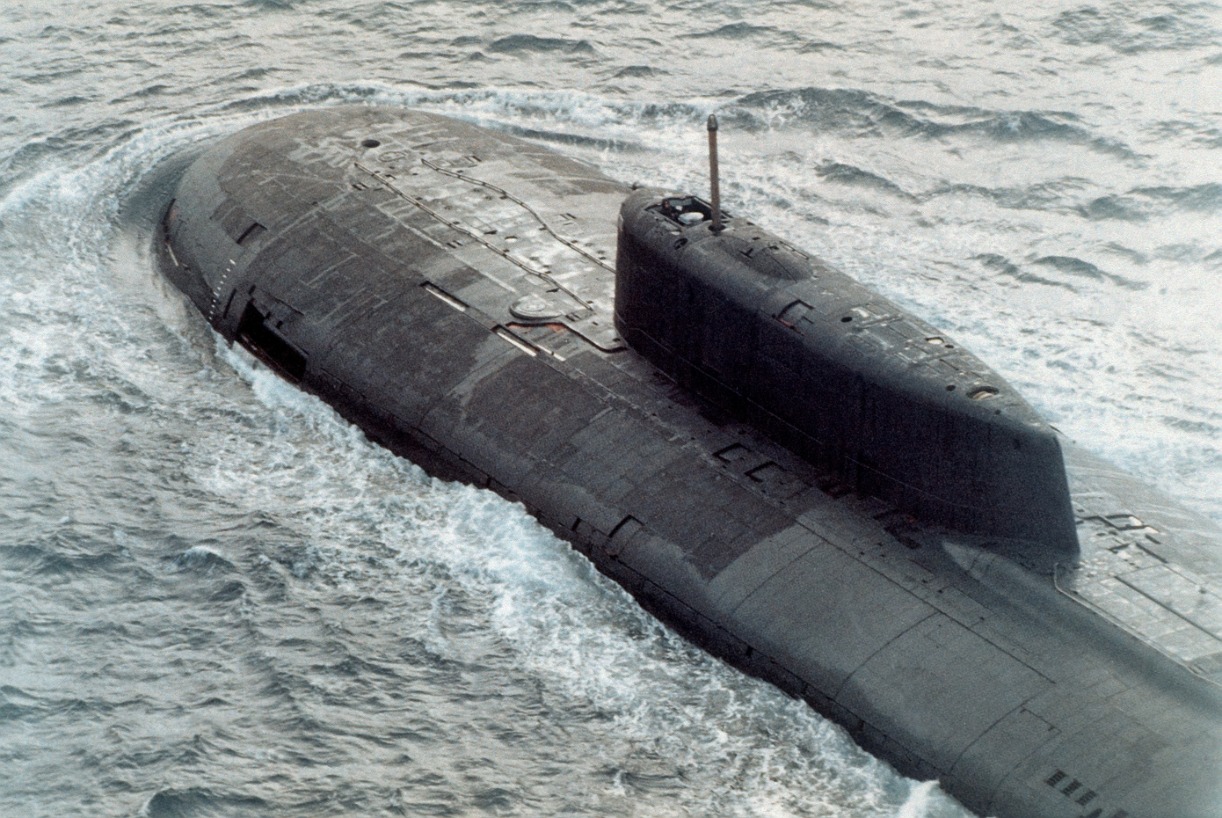Russia Almost Lost an Oscar-Class 'Aircraft Killer' Submarine Due to a Fire
The Tomsk remains on active service with the Russian Navy, homeported at Vilyuchinsk on the Kamchatka Peninsula. On April 19, 2023, she reportedly successfully launched a salvo of twenty-two P-700 anti-ship cruise missiles and thus, “worked out the destruction of an aircraft carrier strike group of a simulated enemy.”
What You Need to Know: The K-150 Tomsk, an Oscar II-class nuclear-powered Russian submarine, faced a significant fire on September 16, 2013, at the Zvezda Shipyard in Vladivostok due to a welding accident igniting insulation materials.

-While no lives were lost, 15 crew members were injured. The incident raised serious questions about Russian maintenance protocols, as live welding was used in sensitive areas without proper fire prevention. Despite partial damage, Tomsk was repaired and re-entered service by June 2014.
-She remains active today, homeported at Vilyuchinsk, and recently demonstrated her combat capabilities with a successful P-700 anti-ship missile launch in 2023.
Russia’s K-150 Tomsk Submarine Fire: A Close Call and a Lesson in Naval Safety
When one thinks of submarine disasters and near-disasters affecting the Russian Navy, chances are one thinks of either the sinking of the Kursk in August 2000, one wherein Vladimir Putin’s dithering and intransigence on rescue operations led to the loss of all hands despite the initial possibility of saving the lives of at least some of the crew, or the Cold War era K-19 incident of 1961 immortalized in film, albeit with typical Hollywood embellishment, in the 2002 film K-19: The Widowmaker.
A Russian submarine disaster that perhaps wasn’t as infamous as those aforementioned occurrences, but significant and worth remembering all the same was the K-150 Tomsk (pennant number 932) fire.
K-150 Tomsk Early History and Specifications
The K-150 Tomsk, named for the city and the administrative center of Tomsk Oblast in Russia, on the Tom River, is an Oscar II-class nuclear-powered cruise missile submarine (SSGN). It was built by Sevmash in the city of Severodvinsk.

She was laid down on August 27, 1991, barely four months before the collapse of the Soviet Union, launched on July 20, 1996, and commissioned on December 30, 1996.
The submarine had the following specifications and vital stats:
Displacement: 16,500–19,400 tons fully laden and submerged; 12,500–14,700 tons surfaced
Hull length: 155 meters (508 feet and 6 inches)
Beam Width: 18.2 meters (fifty-nine feet and nine inches)
Draft: nine meters (twenty-nine feet and six inches)
Propulsion: two steam turbines delivering 73,070 kilowatts of power to two shafts
Max speed (fully submerged): thirty-two knots (fifty-nine kilometers or thirty-seven miles) submerged; fifteen knots (twenty-eight kilometers or seventeen miles) surfaced
Crew Complement: 107 commissioned officers and enlisted sailors
Test Depth: 600 m (1,968 ft 6 in)
Armament:
-4 × 533 mm (21.0 in) and 2 × 650 mm (twenty-six in) torpedo tubes in bow
-28 × 533 mm and 650 mm weapons, including RPK-2 Vyuga (SS-N-15 Starfish) anti-submarine missiles with fifteen kt nuclear warheads and RPK-6 Vodopad/RPK-7 Veter (SS-N-16) anti-submarine missiles with 200 kt nuclear warhead or Type 40 anti-submarine torpedo or thirty-two ground mines
-24 × P-700 Granit (SS-N-19 Shipwreck) cruise missiles with 750 kilograms (1,650 lb) HE or 4 × 100 Mt Poseidon drones
The Incident
The incident in question took place on the morning of September 16, 2023, whilst the Tomsky was undergoing routine maintenance, more specifically the installation of the main ballast tank, at the Zvezda Shipyard in Vladivostok. My colleague Brandon J. Weichert picks up the story from there, “the K-150 Tomsk suffered a massive fire that was publicly declared to have been a welding mishap. No lives were lost during the mishap. Nor was there any concern about the nuclear reactor leaking and killing everyone… The inferno began in the Tomsk’s interhull space due to the ignition of sound insulation materials. Therefore, Russian maintenance procedures and safety standards must be called into question…Why did Russian shipyard workers deem it necessary and acceptable to use live welding in sensitive areas, all without adequate fire prevention measures being in place?... Namely, the Russians are using antiquated infrastructure and slipshod maintenance protocols to maintain their powerful nuclear-powered submarine fleet.”
Though no lives were lost, fifteen crewmembers were injured by the fire; they were sent for treatment to the naval clinical hospital, where they, presumably and hopefully, made a full recovery. As for the extent of the damage to the ship herself, the submarine partially lost its functional characteristics, but she was soon repaired and returned to duty, re-launching on June 12, 2014.
Where Is She Now?
The Tomsk remains on active service with the Russian Navy, homeported at Vilyuchinsk on the Kamchatka Peninsula. On April 19, 2023, she reportedly successfully launched a salvo of twenty-two P-700 anti-ship cruise missiles and thus, “worked out the destruction of an aircraft carrier strike group of a simulated enemy.”
About the Author:
Christian D. Orr is a Senior Defense Editor for National Security Journal (NSJ). He is a former Air Force Security Forces officer, Federal law enforcement officer, and private military contractor (with assignments worked in Iraq, the United Arab Emirates, Kosovo, Japan, Germany, and the Pentagon). Chris holds a B.A. in International Relations from the University of Southern California (USC) and an M.A. in Intelligence Studies (concentration in Terrorism Studies) from American Military University (AMU). He has also been published in The Daily Torch , The Journal of Intelligence and Cyber Security, and Simple Flying. Last but not least, he is a Companion of the Order of the Naval Order of the United States (NOUS).
Image Credit: Creative Commons and/or Shutterstock.


